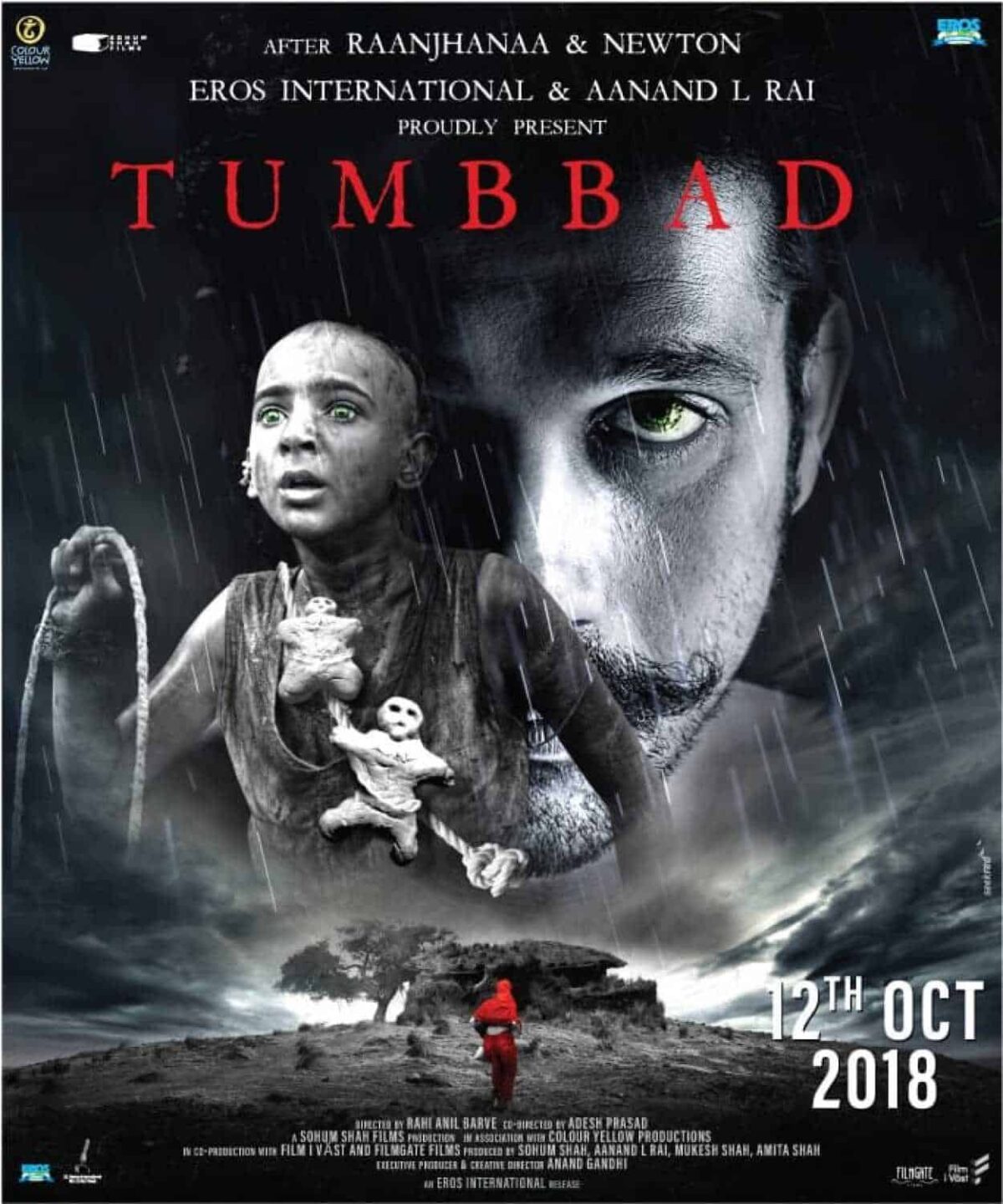There are many unique things about Tumbbad. First and foremost, its genre. Bollywood has always shied away from certain genres. For instance, there is no Bollywood equivalent to Sherlock Holmes, Hercule Poirot or our own Byomkesh Bakshi. For some reason, Bollywood does not enjoy doing detective thrillers. Ditto for horror. Ramsey Brothers were determined but the quality of their films was not compelling enough to take them seriously. Barring recent exceptions like Stree, Bollywood says “No, thank you” to horror movies.
Tumbbad decided to change this and change they did. Not only did they make a movie in the horror genre, they mixed it brilliantly with dark mythology. This has not been done even in Hollywood let alone in Bollywood. (There are some dark interludes in The Lord of the Rings but overall it’s a thrilling adventure.)
“Location, location, location!”
This is as true in real estate as in movies. I was flabbergasted when I realised that much of the breathtaking beauty of the Konkan countryside remains unexplored in our movies. Kashmir and Shimla have been done to death, so are Switzerland and Italy. Tumbbad takes us on a journey through the lush green countryside of Maharashtra and it’s a treat to watch.
It’s a treat to watch because of the breathtaking cinematography. (I am running out of adjectives here! Have I used breathtaking already?) Very rarely have I seen such level of cinematography in a Bollywood movie. Much of the shooting was done during the monsoons and it took four seasons to shoot all the scenes, six years for the whole movie.
Hats off to Sohum Shah, Aanand L. Rai, Anand Gandhi, Mukesh Shah, Amita Shah (Producers), Rahi Anil Barve and Anand Gandhi (Directors), Pankaj Kumar (Cinematography), Mitesh Shah, Adesh Prasad, Rahi Anil Barve, Anand Gandhi (Screenplay), Raj Shekhar (Lyrics), Ajay-Atul, Jasper Kyd (Music), Sanyukta Kaza (Editing) and the entire team. I am mentioning all these names because they are never mentioned in reviews and deserve to be recognised. Everyone mentions actors and directors, how about we start acknowledging writers, editors, cinematographers, and lyricists?
In addiction, the actors have done a great job. Sohum Shah as Vinayak Rao is brilliant, ably supported by Jyoti Malshe (Vinayak’s mother), Rudra Soni (Sadashiv), Anita Date-Kelkar (Vaidehi) and Ronjini Chakraborty as Vinayak’s mistress.
Tumbbad is a horror movie but it heavily underplays the actual horror scenes. Much of it lies in the imagination of the audience. Coming back to locations, haunting would be an apt term here. If you are a Maharashtrian, you would be familiar with the term Vāḍā (वाडा) which roughly means a traditional dwelling place. The cultural connotations with this term are rich and exhaustive enough to fill a book, going back to the many Vāḍās that were built in Pune during the reign of the Peshwas in 18th and 19th century. Much of Tumbbad takes place in old, decrepit Vāḍās. The filmmakers said that they found locations that were derelict and uninhabited. The ancient doors and locks add to the mystery of the settings. This was possible because of the attention to details. As I watched the movie, I kept of wondering – where did they find all these ancient artefacts?
Tumbbad is a mythological, horror movie and yet it shows – very subtly mind you – the various injustices, the class distinctions and psychological nuances of characters. Take for instance, the later stage home of Vinayak Rao (Sohum Shah). He has a wife, three children and a mistress who is in a higher hierarchical position compared to his wife who is practically a maid, a glaring contrast to the initial situation when their roles were reversed. The male child Sadashiv (Rudra Soni) is far removed from the innocent child that is always portrayed in not just Bollywood but also many Hollywood movies. Very few movies dare to probe the psychology of pre-teen children.
It was painful to read that Tumbbad made a measly ₹13.57 Crores at the box office. Not sure if it was a marketing failure but fortunately, for all their criticisms, OTT platforms came to rescue. A film that is not successful at the box office can still be seen on OTT platforms, it’s not destined to some old archive as used to be the case.
Finally, we come to my Achilles heel as a moviegoer – language. The story takes place in Maharashtra but the family speaks Hindi because it is a Hindi movie. Strangely enough, I did not find it as jarring as say Gaman. Reason for this is two fold. The movie excels in so many departments that you feel like giving it a bit of a leeway. Secondly, there are not that many long dialogues in the movie. In fact, the dialogue writing in Tumbbad can best be described as minimalistic.
And yet, the purist in me imagines how this movie would have sounded in Marathi. My ideal movie would be one where each character speaks the language given to him by his circumstances, much like The Longest Day.
The name Tumbbad comes from a famous Marathi novel Tumbadche Khot (तुंबाडचे खोत) written by S. N. Pendse and is based loosely on a story written by Narayan Dharap. Last century has produced some great works in Marathi literature. I am hoping that more filmmakers will turn to Marathi writers like G. N. Dandekar, Jaywant Dalvi or G. A. Kulkarni for their future projects.



